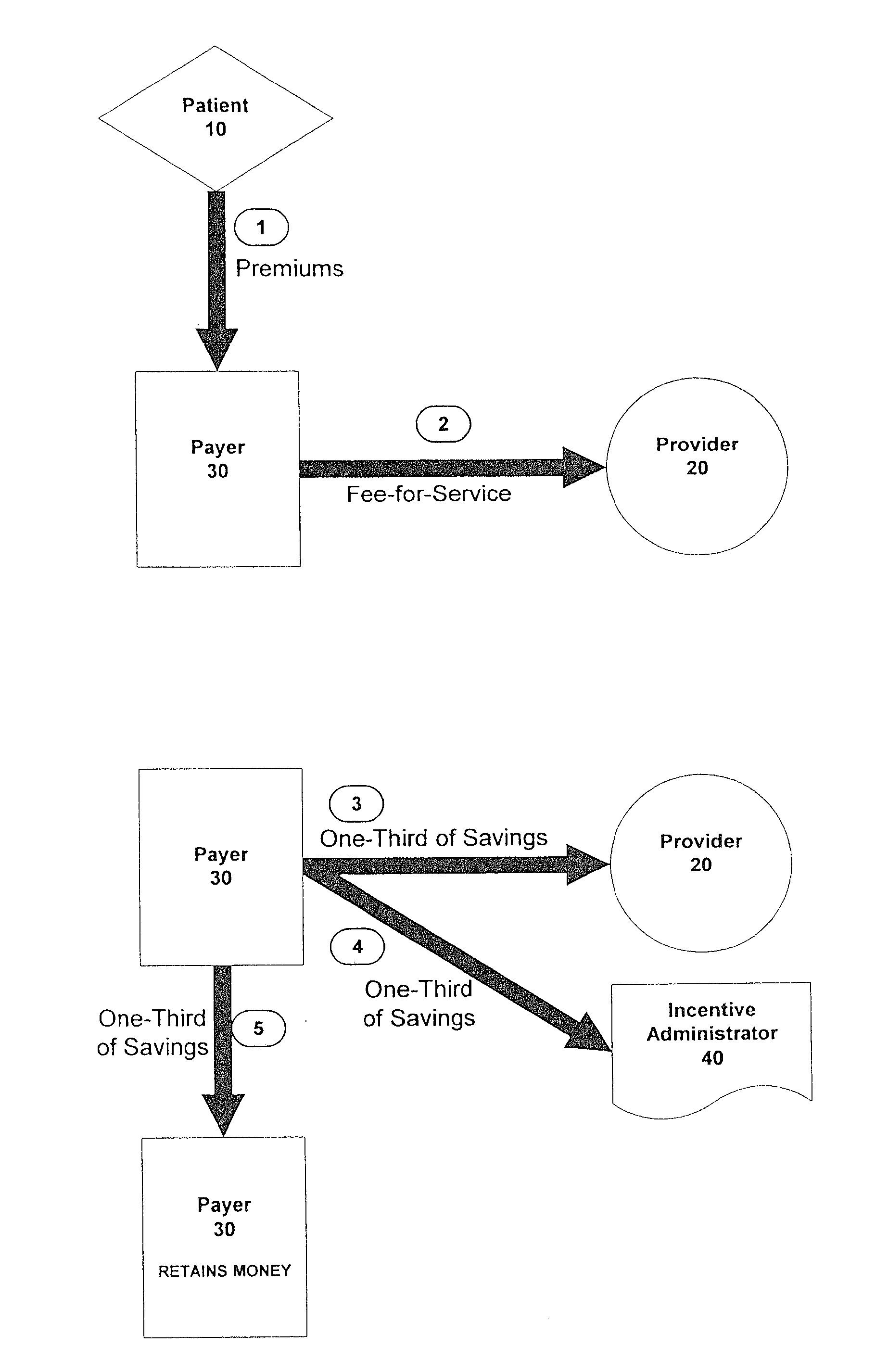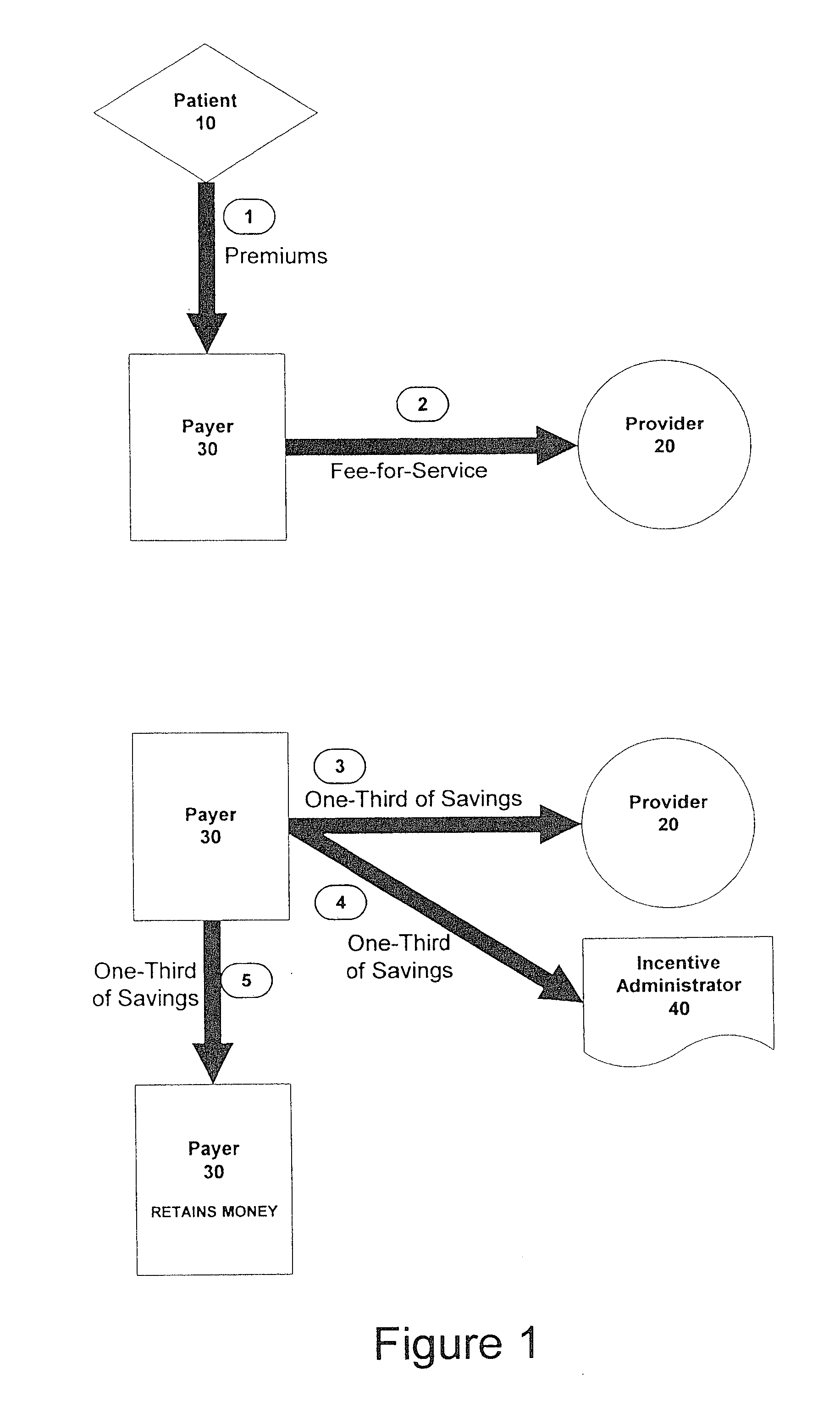Method and apparatus for providing incentives to physicians under an accountable care model
a technology of accountable care and incentives, applied in the field of providing incentives to physicians, can solve the problems of reducing the choice of consumers who have to choose their own doctors, affecting the effectiveness of physician care, and increasing costs, and achieve the effect of short time intervals and efficient care delivery
- Summary
- Abstract
- Description
- Claims
- Application Information
AI Technical Summary
Benefits of technology
Problems solved by technology
Method used
Image
Examples
example
[0059]A specific example is provided to illustrate how embodiments of an incentive provider system is intended to work. In 1999, in a medium-sized town, there is a dominant insurance company, payer 30, and 20 obstetricians who deliver 1,000 babies per year under the insurance company's health plans. Each obstetrician delivers an average of 50 babies per year. The average fee for childbirth (all C-sections and conventional deliveries combined) has been $2,500 for the OB / Gyn fee, plus $7,500 for hospital care, laboratory, surgical assistant fees, consultations anesthesia fees for epidurals as well as general anesthesia, pathology fees, normal newborn care, etc. Hence, an average of $10,000 per baby, or $10,000×1,000 babies=$10 million per year which is paid by the insurer for all obstetrical care. The twenty OB / gyns are grossing $2,500,000 (or averaging $125,000 each) for obstetrical fees for patients covered by this particular insurer.
[0060]Incentive administrator 40 works with the p...
PUM
 Login to View More
Login to View More Abstract
Description
Claims
Application Information
 Login to View More
Login to View More - R&D
- Intellectual Property
- Life Sciences
- Materials
- Tech Scout
- Unparalleled Data Quality
- Higher Quality Content
- 60% Fewer Hallucinations
Browse by: Latest US Patents, China's latest patents, Technical Efficacy Thesaurus, Application Domain, Technology Topic, Popular Technical Reports.
© 2025 PatSnap. All rights reserved.Legal|Privacy policy|Modern Slavery Act Transparency Statement|Sitemap|About US| Contact US: help@patsnap.com



